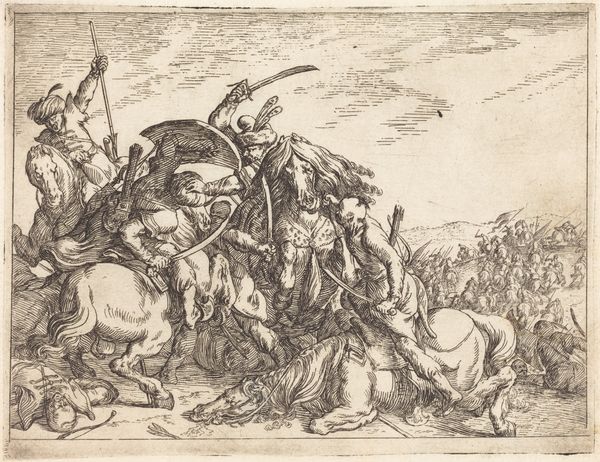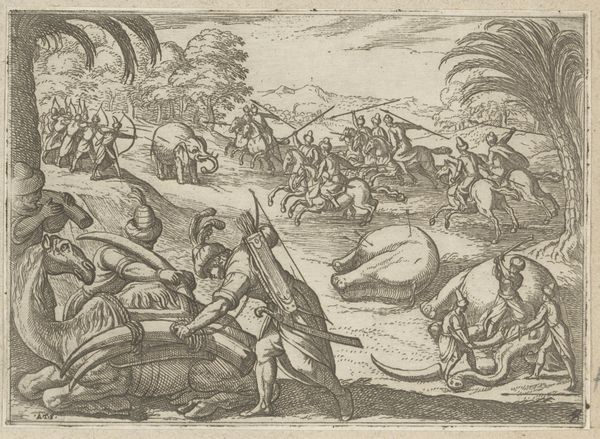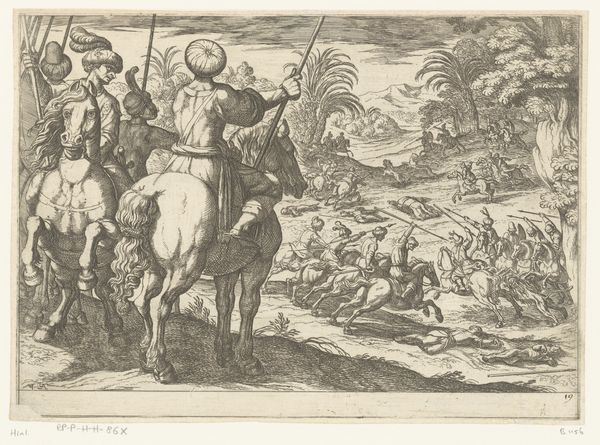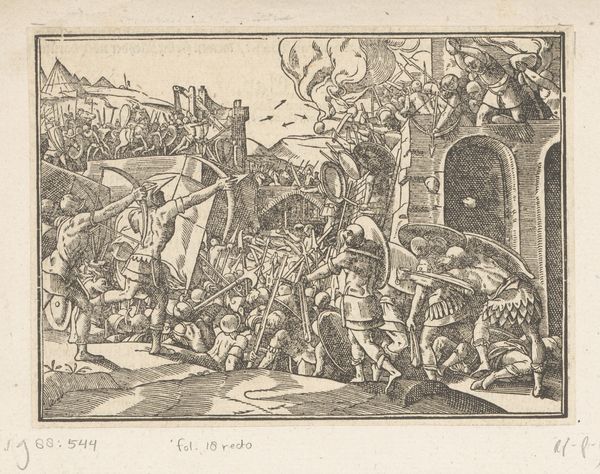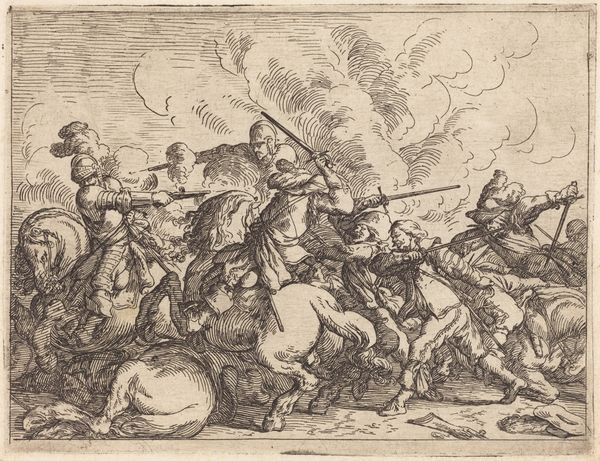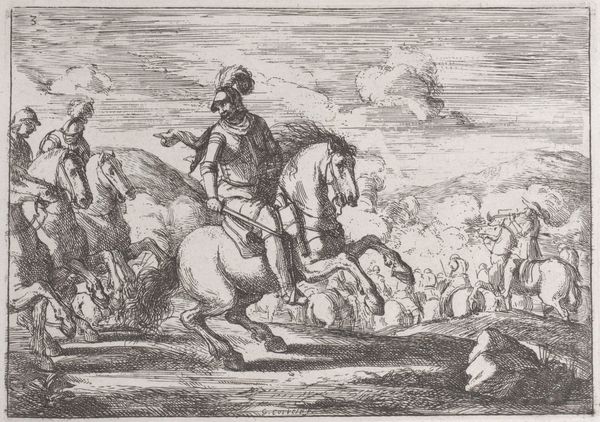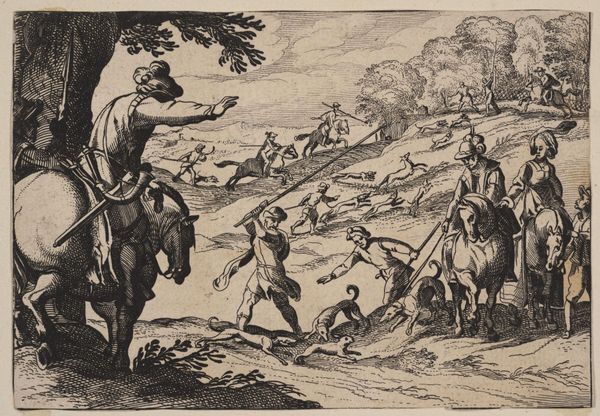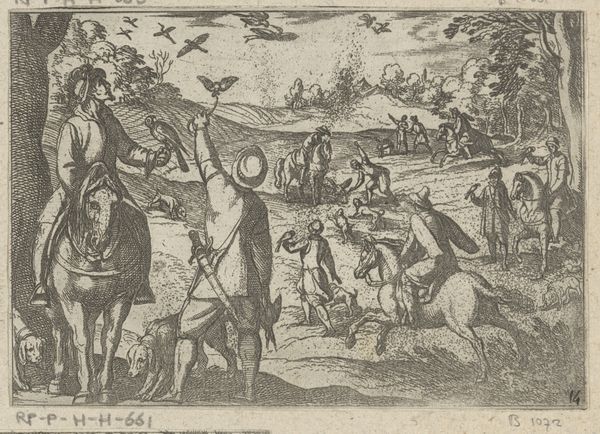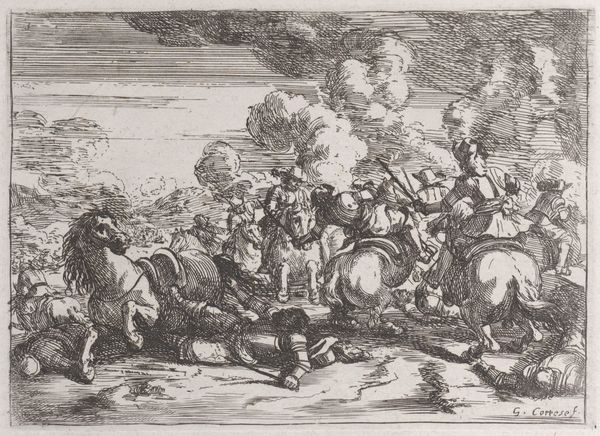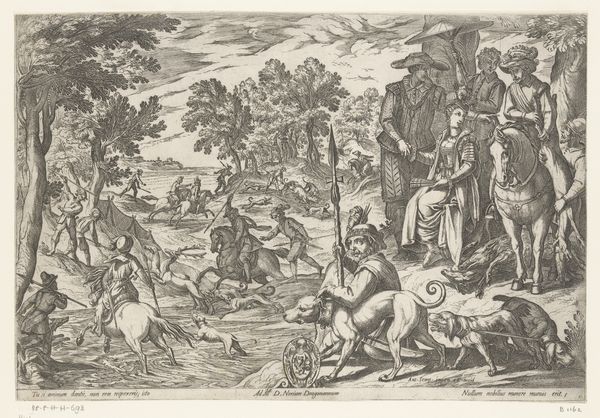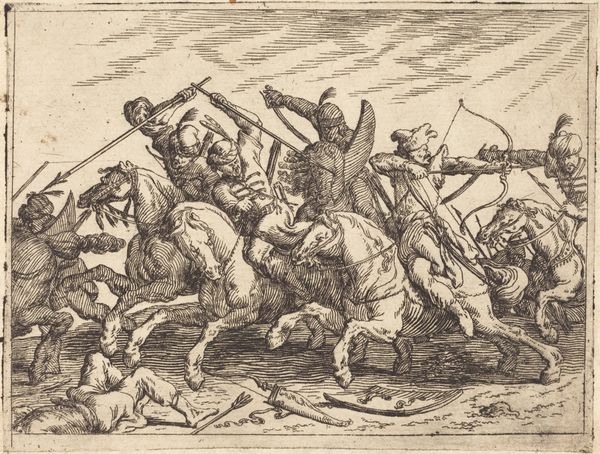
print, engraving
#
baroque
# print
#
figuration
#
line
#
history-painting
#
engraving
Copyright: National Gallery of Art: CC0 1.0
Curator: This intricate engraving, "Capricci di varie battaglie," translating to "Caprices of various battles," was crafted by Johann Wilhelm Baur around 1635. Look closely, and you can see the scene teems with figures and the apparatus of war. Editor: My first impression is of organized chaos. The tight lines and cross-hatching create a frenetic energy, a sense of impending violence frozen in time. What resonates most is how the composition feels both historical and eerily relevant given current global conflicts. Curator: Absolutely, the chaotic yet controlled style is quintessential Baroque, but let's delve a little deeper into Baur's potential intent. This isn't merely a snapshot of a battle; it's an exploration of the theatrics and performative aspects of warfare. Note the meticulous details in their uniforms and weapons. Editor: It’s performative in the sense of ritualistic, perhaps? These figures are acting out prescribed roles within a deadly spectacle. There's a stark visual contrast between the stoicism on some faces and the panic suggested by the swirling smoke—an interesting dichotomy of order and chaos. The image makes me reflect on who holds the power, and what impact has warfare in Europe imposed over gender roles and identity. Curator: I agree; this reflects something deeply embedded within the collective psyche. The repetitive figures, the looming cannons—they speak to the cyclical nature of conflict, and, maybe, of collective trauma and history. Warfare seems almost mythologized here. Do you observe similar representations within our modern era? Editor: Indeed. Mass media outlets and war films frame specific cultural attitudes toward conflict through imagery, often emphasizing power or heroism while erasing collateral realities. And the psychological impact lingers far longer, rippling across generations as persistent social inequalities. These visuals contribute heavily to shaping national and global narratives. Curator: Exactly, the caprices of battle, indeed! It reflects on a culture constantly at war not only with others but itself, a cycle perpetuated, retold, reimagined. It is as if the engraving invites introspection toward society, but without imposing morality. Editor: Which reveals that images, much like ideologies, need to be scrutinized rather than consumed. I appreciate Baur's historical reflection through his use of symbolism, which reminds us about the importance of re-examining historical representation.
Comments
No comments
Be the first to comment and join the conversation on the ultimate creative platform.
